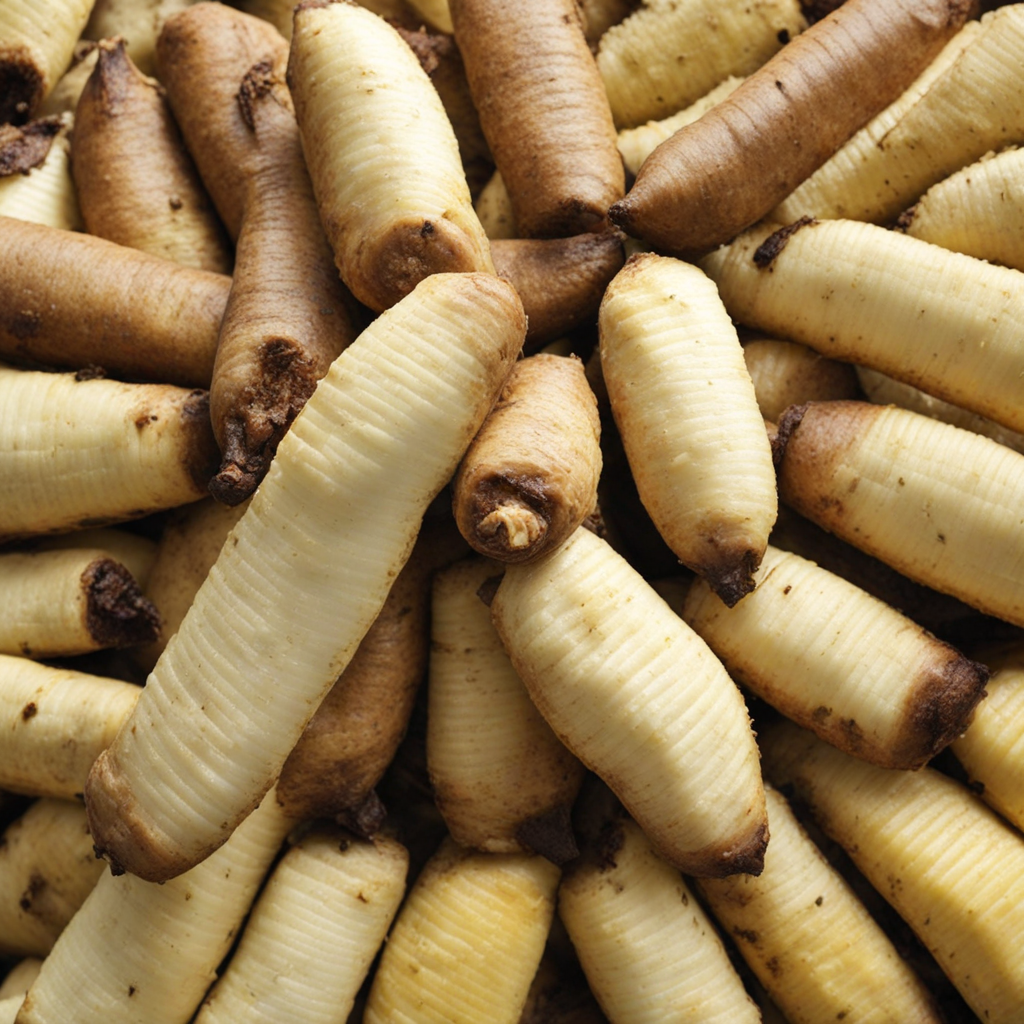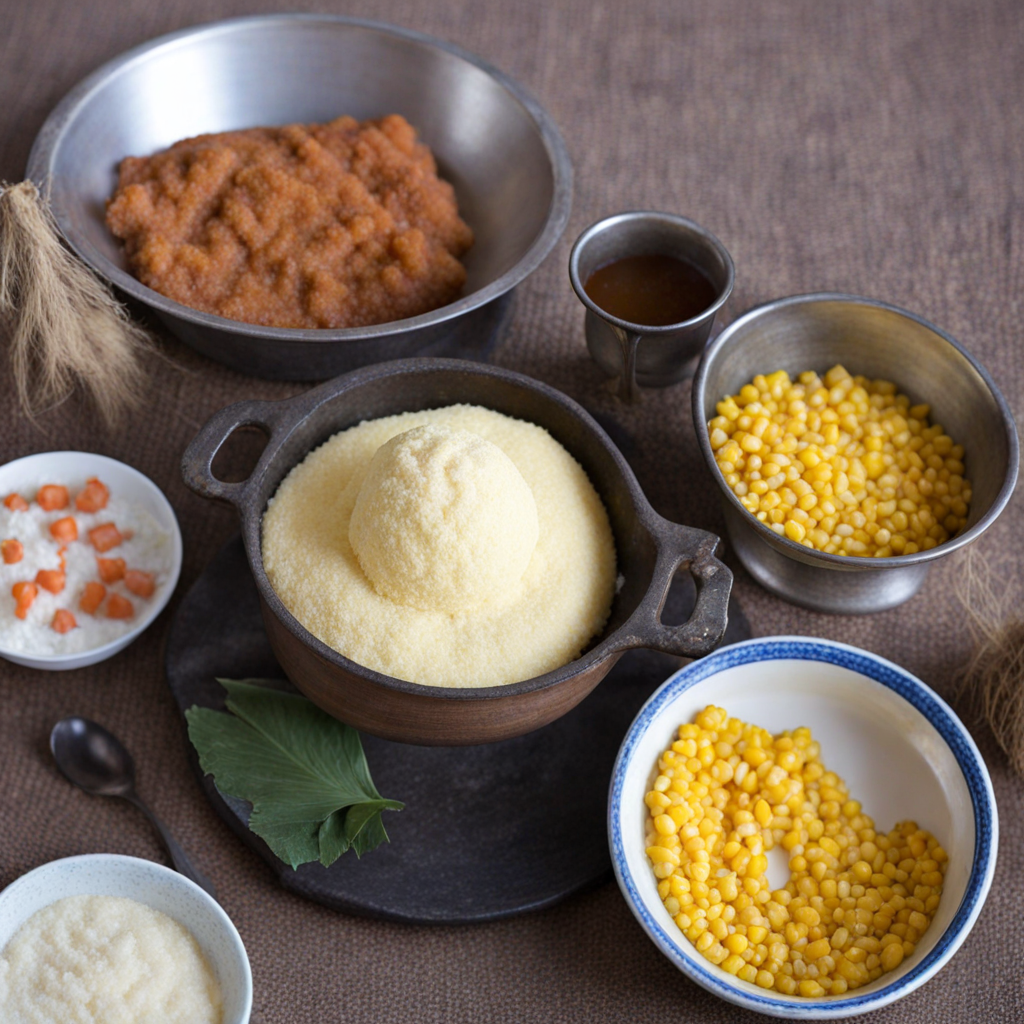Urusyo
Urusyo is a traditional Rwandan dish that showcases the rich flavors and ingredients native to the region. This delightful meal primarily consists of mashed beans, which are often seasoned with a medley of local spices and herbs that enhance its natural earthiness. The beans are cooked until tender and then pounded into a smooth, creamy consistency. This preparation results in a comforting dish that is both nutritious and satisfying, making it a staple in many Rwandan households. The vibrant colors and hearty texture of Urusyo reflect the agricultural abundance of Rwanda, where farming is a vital part of everyday life. Accompanying the mashed beans, Urusyo is often served with a variety of side dishes, such as steamed vegetables, plantains, or sweet potatoes. These accompaniments not only add layers of flavor but also contribute to a well-rounded meal that celebrates the local produce. The combination of textures—from the smoothness of the beans to the crunch of fresh vegetables—creates a delightful eating experience. Additionally, some variations of Urusyo may include a protein component, such as grilled meat or fish, bringing a savory depth that complements the dish perfectly. The cultural significance of Urusyo goes beyond its taste; it embodies the communal spirit of Rwandan dining. Often enjoyed during family gatherings or community events, this dish fosters connections and shared experiences among those who partake in it. As you explore Urusyo, you will not only savor its unique flavors but also appreciate the stories and traditions that accompany this beloved Rwandan dish, making it a true culinary treasure worth discovering.
How It Became This Dish
Urusyo: A Culinary Tradition of Rwanda Origins Urusyo, a traditional dish from Rwanda, is a rich and flavorful meal that embodies the essence of Rwandan culture and its agricultural practices. Its primary ingredients consist of beans, often mixed with other staples such as sweet potatoes, cassava, or plantains. The name "Urusyo" translates to "a pot" in Kinyarwanda, which reflects both its cooking method and communal aspect of sharing meals. The origins of Urusyo can be traced back to the agricultural practices of the Rwandan people, particularly the Hutu and Tutsi communities. Rwanda's fertile soil and favorable climate have long supported a diverse range of crops, with beans being a staple part of the diet due to their adaptability and nutritional value. Archaeological evidence suggests that beans were cultivated in the region as far back as the 9th century, with various indigenous varieties being developed over time. Ingredients and Preparation The preparation of Urusyo has remained remarkably consistent through the centuries, illustrating the deep-rooted agricultural traditions of Rwanda. The dish typically starts with the selection of dried beans, which are soaked and then boiled until tender. The beans are often cooked alongside locally sourced vegetables, including spinach, carrots, or onions, adding layers of flavor and nutritional value. One of the distinctive features of Urusyo is its communal preparation and consumption. Traditionally, families would gather to prepare the meal, with different members contributing various ingredients. This practice not only fosters a sense of community but also strengthens familial bonds, as food plays a significant role in Rwandan social life. The dish is typically served in a large pot, allowing everyone to partake and share, reinforcing the importance of unity and togetherness. Cultural Significance Urusyo holds profound cultural significance in Rwanda, representing more than just sustenance. It is often prepared during significant social gatherings, such as weddings, funerals, and community festivals, symbolizing hospitality and the importance of community ties. In many Rwandan households, sharing a meal of Urusyo is a way of honoring guests and expressing gratitude. The dish is also connected to the Rwandan philosophy of "Ubuntu," which emphasizes the interconnectedness of individuals within a community. Ubuntu teaches that one's humanity is tied to the humanity of others, and Urusyo embodies this philosophy through its communal nature. The act of sharing food fosters dialogue, strengthens relationships, and promotes harmony within communities. Development Over Time As Rwanda has evolved, so too has the dish of Urusyo. The 1994 Rwandan Genocide profoundly impacted the nation, leading to a reevaluation of cultural practices, including food traditions. In the aftermath, many communities struggled with food insecurity, which altered the way traditional dishes were prepared and consumed. However, Urusyo remained a staple, adapting to the availability of ingredients and the need for sustenance during difficult times. In recent years, Rwanda has experienced significant growth and development, leading to a resurgence of interest in traditional foods like Urusyo. Culinary tourism has emerged as an important sector, with visitors seeking authentic Rwandan experiences. Restaurants and local markets are now showcasing Urusyo, often with modern twists that incorporate international flavors while retaining the dish's essence. Contemporary Rwandan chefs have started to innovate, experimenting with various ingredients and presentation styles. Some have introduced spices and flavors from other global cuisines, infusing Urusyo with new life while still honoring its traditional roots. This blending of flavors reflects Rwanda's growing openness to the world while maintaining a deep respect for its culinary heritage. Urusyo in Modern Society Today, Urusyo is not just a dish but a symbol of resilience and a celebration of Rwandan identity. It is frequently featured in national events and festivals, where it serves as a reminder of the country’s agricultural wealth and communal spirit. The government and various organizations have promoted the cultivation of beans and other crops, recognizing their importance in nutrition and food security. Moreover, Urusyo has become a focal point in discussions surrounding sustainability and local food systems. As Rwanda continues to embrace agricultural innovation, there is a growing emphasis on using indigenous ingredients and traditional cooking methods. This movement not only preserves the culinary heritage but also promotes environmental sustainability by encouraging local farming practices. In urban areas, where traditional cooking methods may be less accessible, the popularity of Urusyo has sparked interest in culinary classes that teach young Rwandans the importance of their food heritage. These classes aim to pass down the traditional methods of preparation while encouraging a new generation to appreciate the values embedded in their food culture. Conclusion Urusyo is more than just a dish; it is a testament to Rwanda's rich agricultural history, cultural significance, and evolving identity. Its roots run deep, connecting generations through shared meals and communal gatherings. As Rwanda continues to navigate the complexities of modern life, Urusyo remains a beloved staple, reminding its people of the strength of community, the importance of tradition, and the enduring power of food to bring people together. In a world increasingly influenced by globalization, the story of Urusyo illustrates the resilience of local culinary traditions and the vital role they play in shaping cultural identity. As Rwandans continue to celebrate and innovate around this traditional dish, Urusyo stands as a symbol of hope, unity, and the enduring spirit of a nation.
You may like
Discover local flavors from Rwanda







